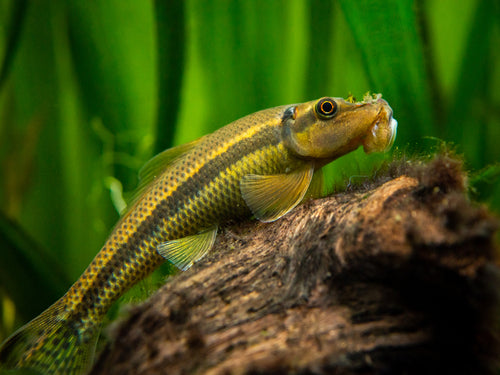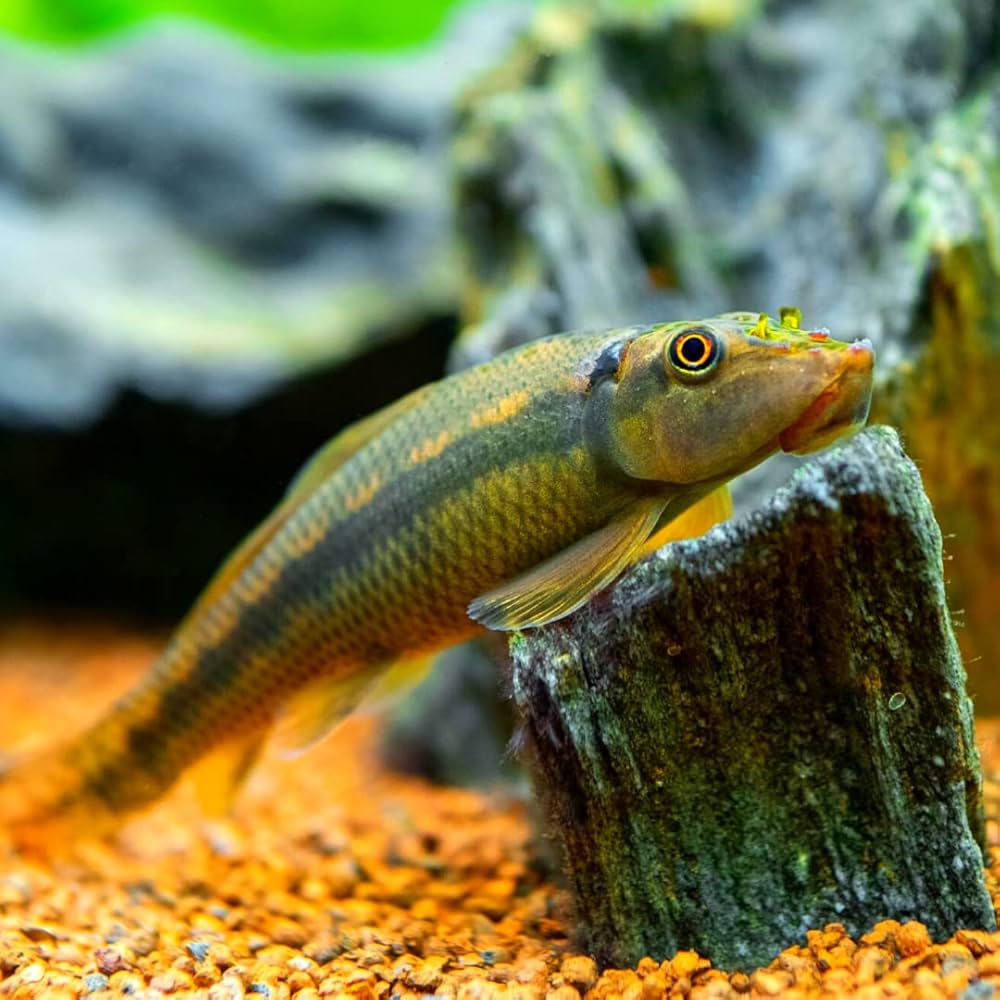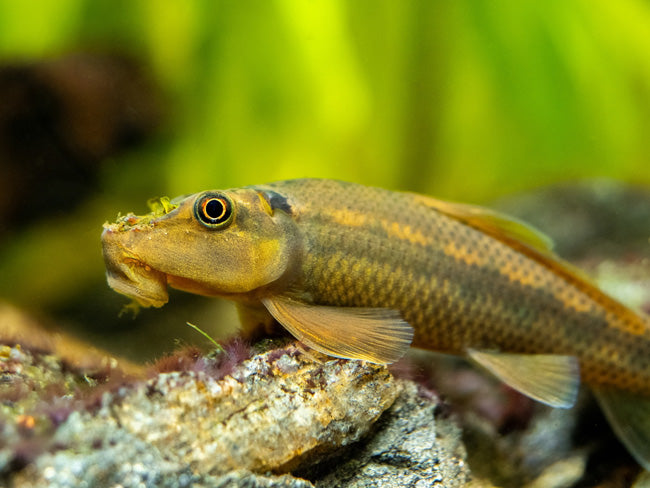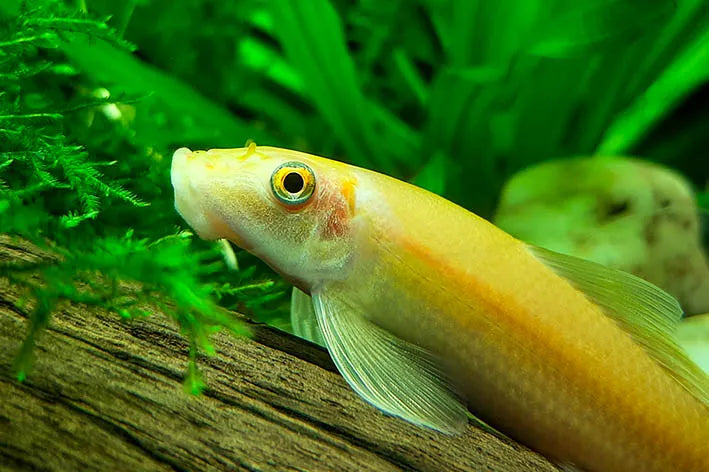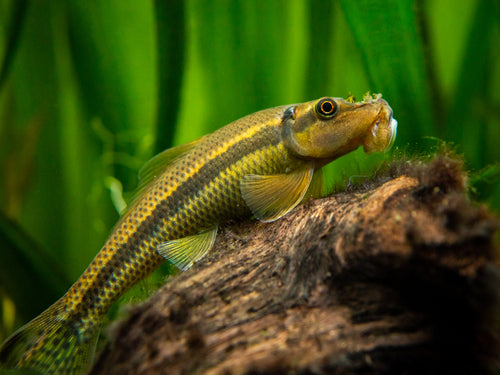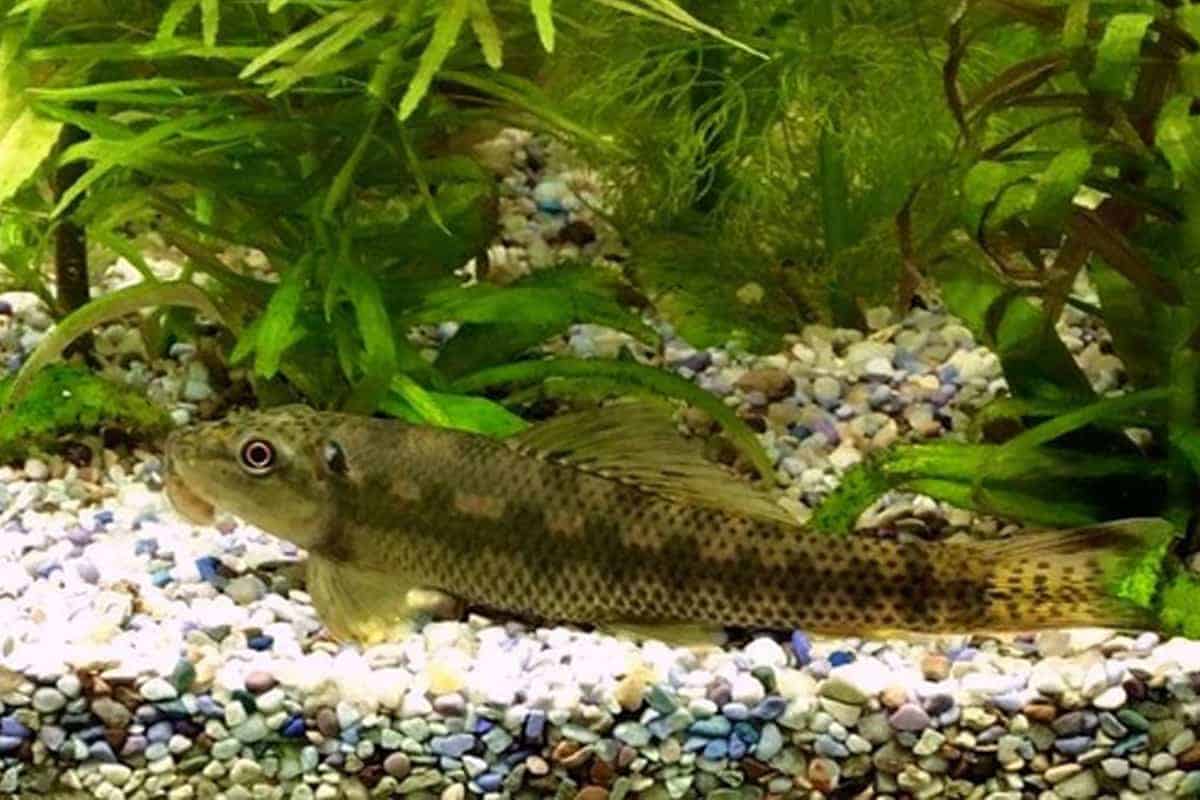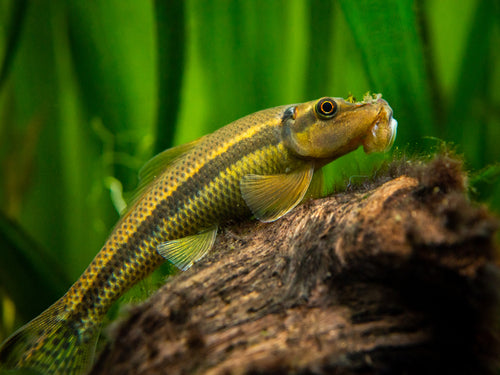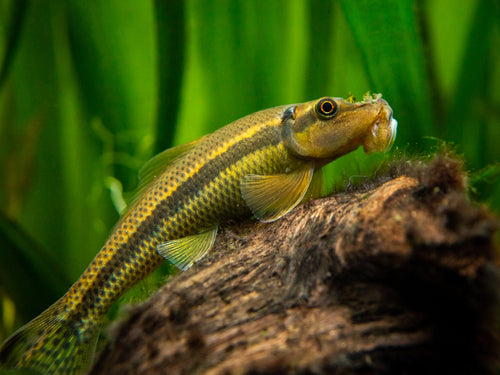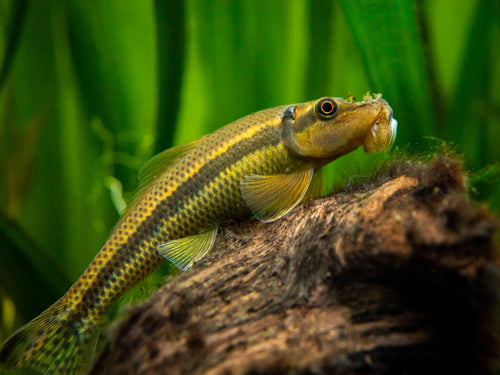Chinese Algae Eaters (Gyrinocheilus aymonieri) - 1"-1.25" - Live Fish
Chinese Algae Eaters (Gyrinocheilus aymonieri) - 1"-1.25" - Live Fish
DESCRIPTION OF ITEM:
The Chinese Algae Eater (Gyrinocheilus aymonieri) is a species of freshwater fish that is commonly kept in aquariums due to its ability to help control algae growth. Native to Southeast Asia, particularly China, Vietnam, and Thailand, this fish has both benefits and challenges when kept in home aquariums.
Key Features of the Chinese Algae Eater:
-
Appearance:
- Chinese Algae Eaters have a long, slender body that can grow to about 6-10 inches (15-25 cm) in length, though they are typically smaller in aquariums.
- Their coloration is usually olive brown or light green, with a darker stripe running down each side of their body. The skin may have a slight sheen, and their mouth is unique, as it has a sucker-like structure (a ventral disc) that allows them to attach to surfaces.
- Juvenile Chinese Algae Eaters are often more attractive, with a bright yellowish-green color, but as they mature, they may lose some of their vibrant coloration.
-
Habitat:
- In the wild, Chinese Algae Eaters inhabit slow-moving rivers, streams, and ponds with plenty of rocks and submerged vegetation. These environments provide ample surfaces for them to feed on algae.
- In an aquarium, they require a well-maintained tank with good filtration and places to hide, like caves or plants, as they can become stressed without adequate cover.
-
Diet:
- As the name suggests, Chinese Algae Eaters primarily feed on algae, which is their natural diet in the wild. They are often used in aquariums to help keep algae growth under control on surfaces such as tank walls, decorations, and plants.
- However, while they do eat algae, they are omnivorous, and in an aquarium setting, it is important to supplement their diet with other foods. They can eat sinking pellets, vegetable matter (like zucchini, spinach, or algae wafers), and occasionally live or frozen foods like brine shrimp or bloodworms.
- They tend to lose interest in algae as they mature, so supplemental feeding is essential, especially in tanks where algae growth is minimal.
-
Behavior:
- Chinese Algae Eaters are generally peaceful but can become more aggressive as they grow older. They are known to be territorial, especially toward other bottom-dwelling or similar-shaped fish, and may become nippy.
- They often attach to other fish, especially slower-moving species, using their sucker mouths to scrape mucus and scales off, which can lead to stress or injury for their tank mates.
- To avoid aggression, it is best to keep them with active, fast-moving fish and ensure they are in a spacious tank with plenty of hiding spots.
-
Tank Care:
- Chinese Algae Eaters are relatively hardy but thrive in well-oxygenated water with a temperature range of 72-79°F (22-26°C) and a slightly acidic to neutral pH (6.5–7.5).
- They do best in larger tanks where they have room to swim and explore. Tanks should have a strong filtration system to keep the water clean and maintain healthy algae growth.
- Regular water changes and a consistent maintenance schedule are important to ensure the health of the fish and the overall aquarium environment.
-
Breeding:
- Breeding Chinese Algae Eaters in captivity is relatively rare. They are believed to be egg-layers, and their breeding requires specific conditions, including the right water parameters and space.
- The male typically chases the female, and after mating, the eggs are laid on flat surfaces, where both parents may guard the eggs. However, breeding them in a home aquarium is challenging.
Conclusion:
While Chinese Algae Eaters can be beneficial in controlling algae growth, they may not be suitable for every tank due to their potential aggression as they mature. They are best kept with active, larger fish and in tanks with sufficient hiding spaces. Although they start as helpful algae-eaters, they may require supplemental feeding as they grow and lose interest in algae. Their peaceful nature during youth can shift as they mature, so understanding their behavior is key to maintaining a harmonious aquarium.
Product features
Product features
Materials and care
Materials and care
Merchandising tips
Merchandising tips
Share
